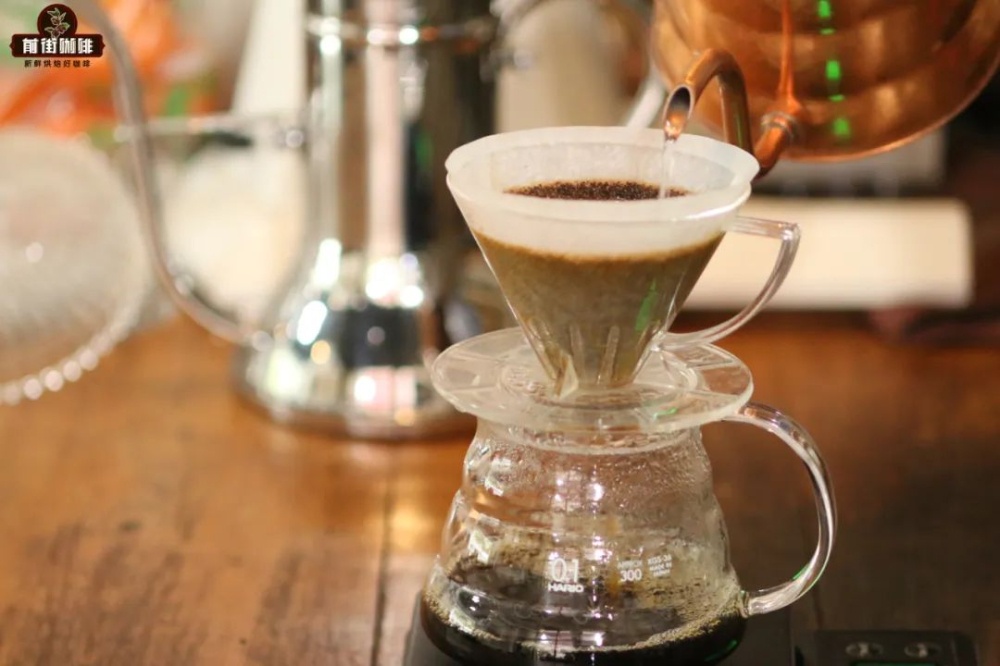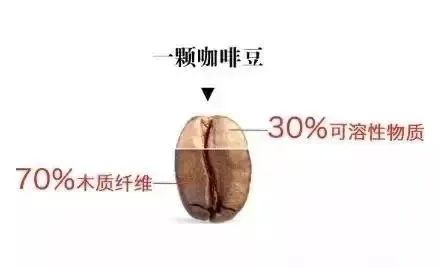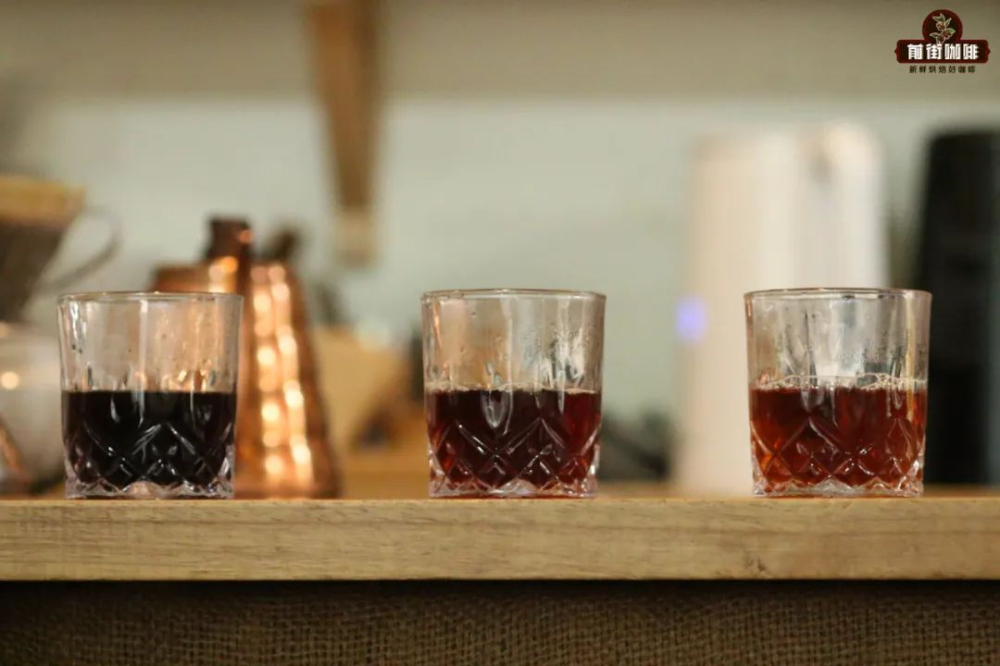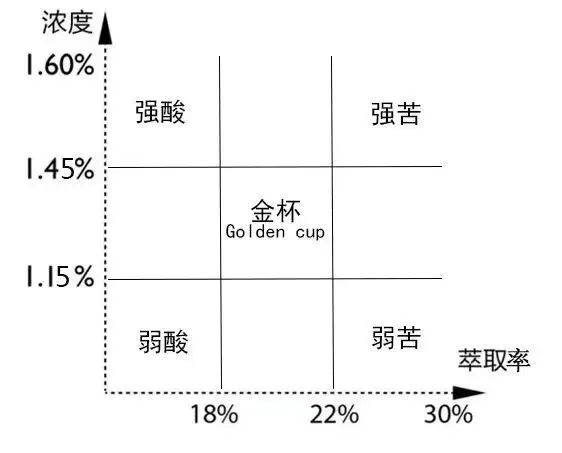Relationship between extraction rate and concentration of hand-brewed coffee the solution parameters of insufficient extraction and over-extraction
Friends who learn to brew coffee by hand must understand the relationship between extraction rate and concentration. Understanding these two things is very helpful for future coffee brewing.

First of all, we have to understand what is the main body of the extraction rate and concentration. Extraction rate refers to the percentage of coffee beans (powder) dissolved in water to the coffee beans themselves, and the main body is coffee beans. All the soluble substances in coffee beans account for only 30% of themselves, and we generally think that the extraction rate of 18-22% is to dissolve better coffee flavors. theoretically, the extraction rate higher than 22% is prone to bitter and miscellaneous and other unpleasant flavors.

The concentration refers to the percentage of the dissolved coffee substance in the coffee liquid, and the main body is the coffee liquid. The average coffee concentration is between 1.15 and 1.45%.
See here, do not know if you find their connection? What they have in common is the dissolved coffee substance, which is expressed by the formula as "extraction rate = concentration × coffee liquid weight / coffee bean (powder) weight". As long as we use a concentration meter to measure the concentration of coffee, we can get the extraction rate of coffee beans.

Of course, concentration meters are not available to everyone, so today we only discuss the relationship between them to help us make cooking plans. Below, we can take a look at a group of segmented brewing experiments in front of the street, dividing the whole brewing process into three stages, and each has a total of three cups of coffee in the front, middle and end, and the amount of coffee in the three cups is the same. Through observation and taste, the front part is the richest, the middle part is the second, and the tail section is the lightest.

Therefore, at the beginning of coffee brewing, the concentration of coffee is the highest, and the extraction efficiency is also the highest in the early stage, and then the extraction efficiency decreases slowly, and the concentration decreases slowly. However, the extraction rate is cumulative, no matter how low the extraction efficiency is in the later stage, as long as water continues to wash the coffee powder, the extraction rate will increase.
We can make a hypothesis that if endless water washes coffee, the extraction rate of coffee will always reach 30%, but the more water is used, the weaker the concentration of coffee will be. Therefore, hand-brewing coffee is not only to control the extraction rate of coffee beans, but also to grasp the concentration of coffee liquid.
So we get the first parameter to control the two-the ratio of powder to water. Using a powder-to-water ratio of 1:15 to 1:16 is easy to reach a balance between extraction rate and concentration, that is, the gold cup extraction range that is often cited in coffee extraction. However, Qianjie should add that the principle of gold cup extraction is worth learning, and the relationship between extraction rate and concentration can be mastered. As for the data on the extraction rate of 18-22%, the concentration of 1.15-1.45% of the "gold cup extraction range", you can refer to, do not indulge in the data. Hitting the golden cup zone does not necessarily mean it tastes good. There are also good examples of coffee that is not in the golden cup range. (SCA also realized that the gold cup extraction theory needs to be updated and iterated, so he began the research of Golden Cup 2.0 in 2017. Let's just sit back and wait for the big guys' research results! )

After knowing the relationship between the extraction rate and the concentration, we can also tell what went wrong when we encountered a bad flavor when tasting the coffee. For example, when tasting the strong, bitter, rough, heavy flavor, it can be judged that it is caused by the high concentration and extraction rate.
For example, if it tastes rich and boring, or with acidity and no aftertaste, it is caused by high and low extraction. For example, the feeling of water, light and tasteless is caused by low concentration and low extraction rate. For example, bitterness, emptiness and thinness and roughness are caused by low concentration and high extraction rate.
If the ratio of powder to water is properly used (1:15-1:16), the phenomenon of low concentration and high extraction will hardly occur.
If the phenomenon of high concentration and low extraction occurs, it is appropriate to enlarge the ratio of powder to water and inject more water to improve the extraction rate and reduce the concentration.
Most of the problems of high concentration and high extraction and low concentration and low extraction come from grinding degree and water temperature.
Important Notice :
前街咖啡 FrontStreet Coffee has moved to new addredd:
FrontStreet Coffee Address: 315,Donghua East Road,GuangZhou
Tel:020 38364473
- Prev

What does the cleanliness of coffee beans mean? what does it have to do with? The relationship between the level of hand-brewed coffee and cleanliness
When tasting coffee, it is sometimes described as "how clean this coffee bean is!" So what does this cleanliness mean? In tasting coffee, one item is cleanliness. Many friends have a vague understanding of the word. Here in Qianjie, try to express it clearly and cleanly.
- Next

Three-stage water injection technique algorithm for hand-brewed coffee brewing coffee is a method to judge the time of water cut-off.
Before a friend came to Qianjie, "Qianjie Qianjie, the last section of the three-stage water injection should wait for the water to run dry, or should it be injected in the middle of the water?" Why do I see someone say it's better to wait for the water to run dry before filling it? " This friend asked this question in front of the street because when he was teaching people to make coffee in front of the street.
Related
- Beginners will see the "Coffee pull flower" guide!
- What is the difference between ice blog purified milk and ordinary milk coffee?
- Why is the Philippines the largest producer of crops in Liberia?
- For coffee extraction, should the fine powder be retained?
- How does extracted espresso fill pressed powder? How much strength does it take to press the powder?
- How to make jasmine cold extract coffee? Is the jasmine + latte good?
- Will this little toy really make the coffee taste better? How does Lily Drip affect coffee extraction?
- Will the action of slapping the filter cup also affect coffee extraction?
- What's the difference between powder-to-water ratio and powder-to-liquid ratio?
- What is the Ethiopian local species? What does it have to do with Heirloom native species?

